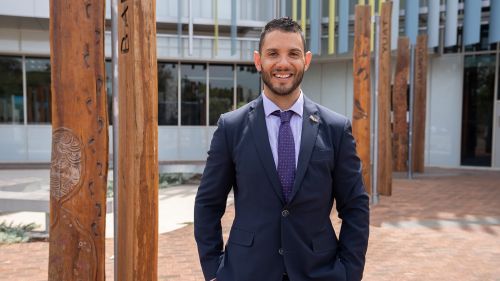People living with Australia's most common genetic condition are set to benefit significantly from a new national patient registry for healthcare providers.
An estimated 100,000 Australians live with haemochromatosis, a condition affecting people of northern European descent which sees the body accumulate too much iron and can lead to many complications.
Currently, specialists in different fields such as rheumatologists, gastroenterologists, hepatologists, cardiologists and endocrinologists record patient information in their own systems — but there was no national registry for cataloguing data across the different medical disciplines that treat haemochromatosis.
Haemochromatosis Australia teamed up with Edith Cowan University and QIMR Berghofer Medical Research Institute to secure a $400,000 grant under the Public Health and Chronic Disease Program to develop a new, cloud-based Haemochromatosis Patient Registry.

ECU Research Theme Leader (Health) Professor John Olynyk said the registry will support research into the role iron plays in many related chronic health conditions, including liver disease, arthritis, diabetes and heart conditions.
Professor Olynyk said it would also support opportunities for future research into the impact of iron on the brain.
"This is a great example of how consumers, researchers, clinicians and individuals afflicted by a disease, can partner together to develop systems which improve care and provide research platforms for the future," Professor Olynyk said.
QIMR Berghofer Deputy Director Professor Grant Ramm said while there was a clinical database with data from thousands of Queensland hemochromatosis patients, the national register will open up new possibilities such as larger studies, more basic and clinical research projects, and the recruitment of patients to trial potential new therapeutic approaches or treatments all across Australia.
"This will deliver enormous benefits to researchers, patients and their doctors," he said.
"It will really assist in accelerating research into haemochromatosis which can present with various chronic conditions including liver disease, arthritis and fatigue, driving life-changing discoveries and better patient outcomes."

ECU Research Theme Leader (Securing Digital Futures) Tony Marceddo said the end goal was to make people's lives better.
"For people living with haemochromatosis, it is not only challenging but an individual journey that requires balancing their changing symptoms, treatment and the demands of their daily life," he said.
"The benefit of a national patient registry is that not only can it collect valuable information about people who have the specific condition, but it can also provide health outcome data to monitor patient needs and identify health problems that need prompt attention and improve the quality of care."
 A new patient registry will help boost haemochromatosis treatment and research.
A new patient registry will help boost haemochromatosis treatment and research.




